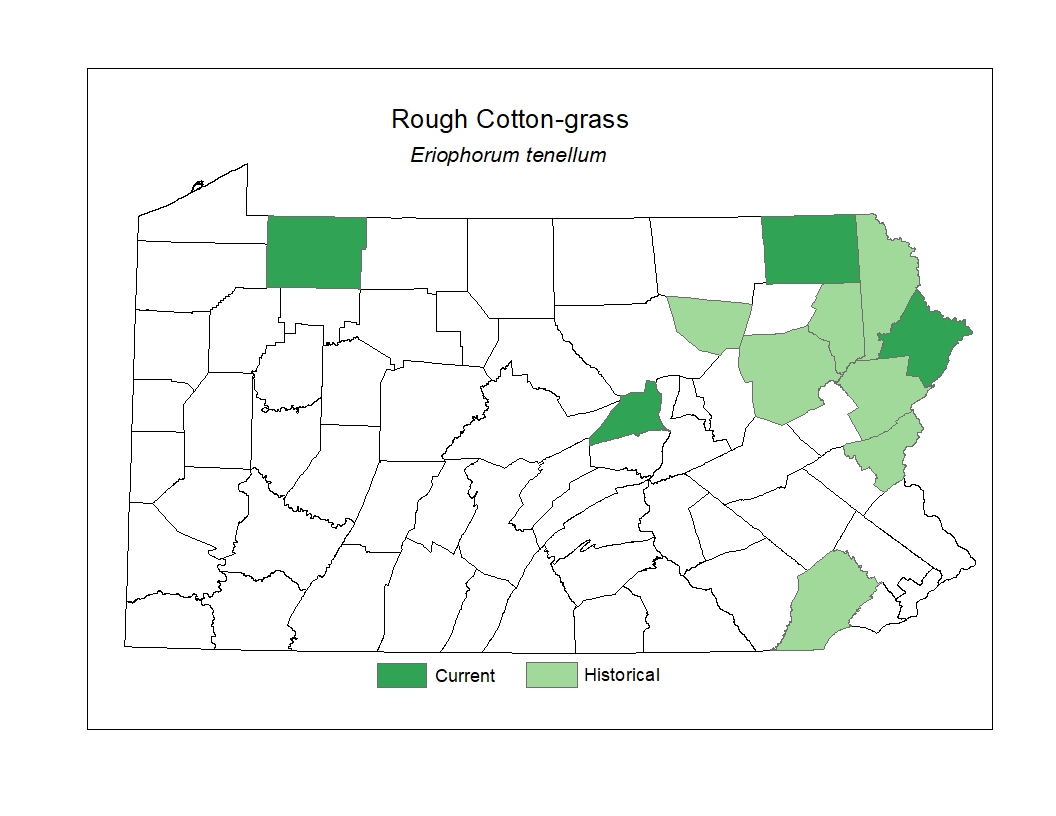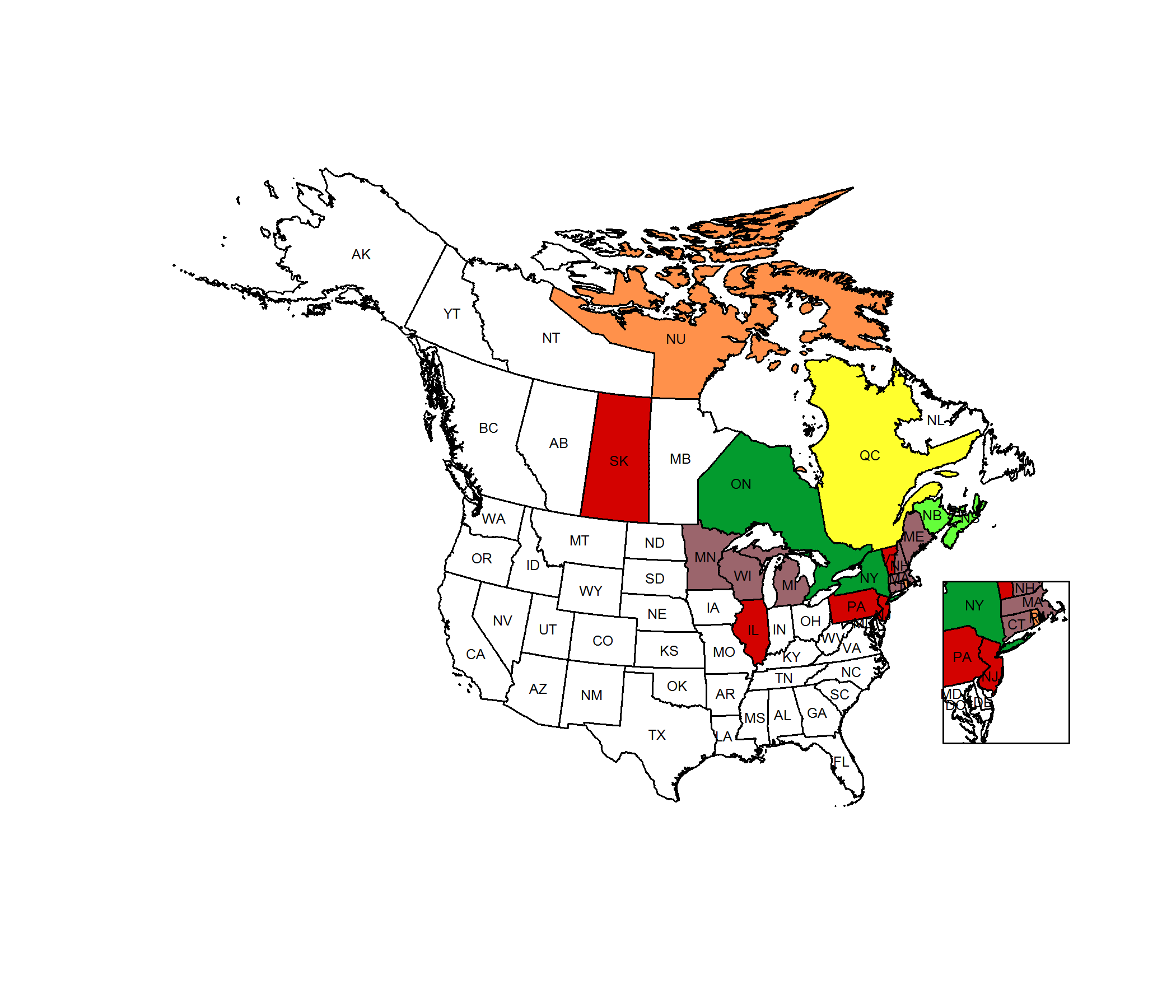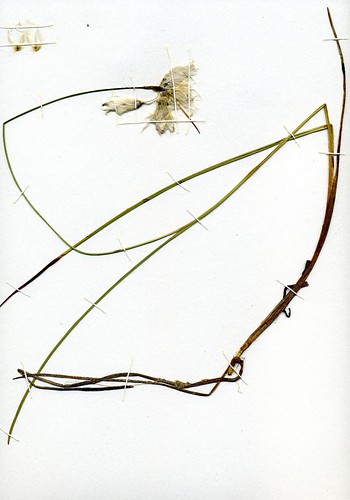 Species Factsheets
Species Factsheets
Eriophorum tenellum
Rough Cotton-grass
State Status: Pennsylvania Endangered (PE)
PBS Status: Pennsylvania Endangered (PE)
Federal Status:
Global Rank: G5
![]() rank interpretation
rank interpretation
State Rank: S1
Description
The group of plants known as Cotton-grass includes grass-like plants (actually members of the sedge family, or Cyperaceae) that are made conspicuous by the tufts of cotton-like hairs that are attached to their minute flowers and fruits. Five species of Cotton-grass grow in Pennsylvania, mostly in bogs and bog-like wetlands, and share additional features such as 3-sided stems, narrow grass-like leaves, and 3-sided, dry, mostly brownish fruits about 2-3.5 mm in length. The combination of features that distinguish Rough Cotton-grass from the other 4 species include the minutely roughened upper stem, the very narrow leaves mostly 1-2 mm in width with a channel-like trough on the upper side, the blade portion of the leaf that tends to equal or be longer than the sheath portion of the leaf that surrounds the stem, the clusters, or spikelets, of flowers and fruits that usually have slender stalks that cause them to spread outward or droop, and the flowering and fruiting time occurring in summer.
Rank Justification
Critically imperiled in the nation or state because of extreme rarity (often 5 or fewer occurrences) or because of some factor(s) such as very steep declines making it especially vulnerable to extirpation from the state.
Habitat
It grows in boggy wetlands, typically on floating bog mats.
Survey Dates
Fruits in June
Distribution
Rough Cotton-grass ranges from Newfoundland to Saskatchewan and south into New Jersey, Pennsylvania, and Illinois. In Pennsylvania, it can be considered a northerly species and has been documented historically in the northern, particularly the northeastern, counties.

Management
The viability of populations of Rough Cotton-grass and its habitat may be enhanced by creating buffers and protecting the natural hydrology around bogs and controlling invasive species. Rough Cotton-grass is an indicator of bog habitats that feature various orchids, insectivorous plants such as sundew, bladderwort, and pitcher plant, and other interesting species.
Conservation Status Map


NatureServe. 2017. NatureServe Explorer: An online encyclopedia of life [web application]. Version 7.1. NatureServe, Arlington, Virginia. Available https://explorer.natureserve.org.
- NatureServe. 2018. NatureServe Explorer: An online encyclopedia of life [web application]. Version 7.1. NatureServe, Arlington, Virginia. Available at https://www.natureserve.org/explorer
- Pennsylvania Natural Heritage Program. 2018.
- Rhoads, A.F. and W.M. Klein, Jr. 1993. The Vascular Flora of Pennsylvania. American Philosophical Society, Philadelphia, Pennsylvania. Rhoads, A.F. and T.A. Block.
- 2007. The Plants of Pennsylvania: An Illustrated Manual. 2nd edition. University of Pennsylvania Press, Philadelphia, Pennsylvania.







